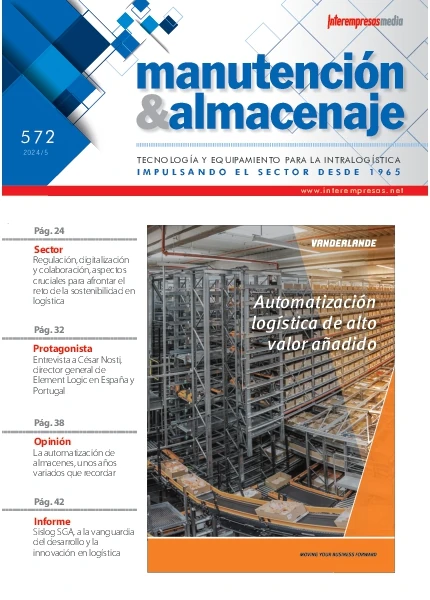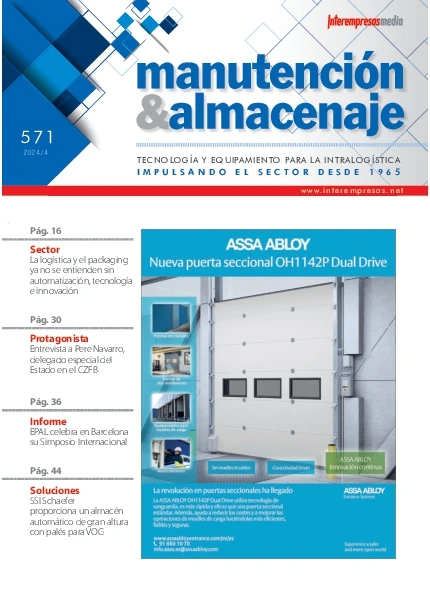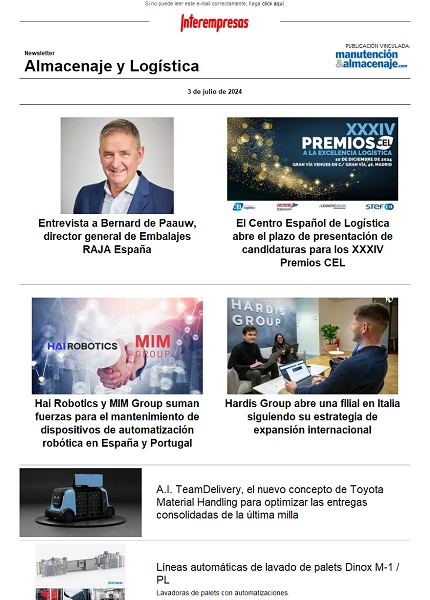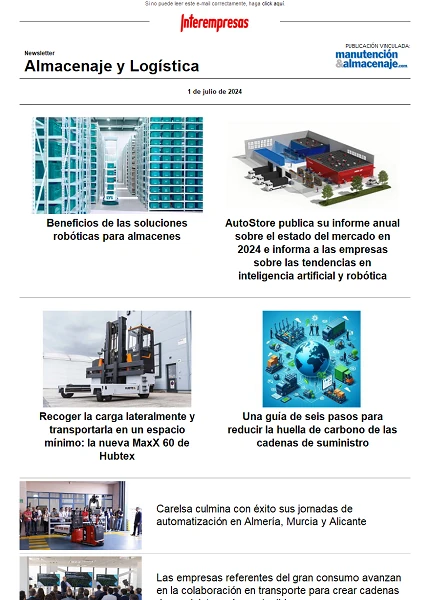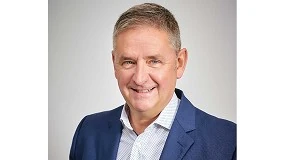Reverse logistics, what is and which are his main characteristics
The reverse logistics, or as it designates internationally reverse supplyChain, covers all the wide fan of the flow of products and complementos that initiates after the delivery of the primary supply and that, known traditionally by the name of “returns”, protects the optimisation of this reverse flow of products, packagings analysing all the possibilities: reuse in the supplyChain, repair, catering, re-manufactura partial, recycled of raw materials or definite elimination and deciding in each case that is what it is necessary to apply, and how and when apply it.
In the rest of the processes that includes the reverse logistics, the cycles of life of the products, increasingly short, the excess of offer and the wayward demand that this causes and the already quoted environingingmental legislation that have generated have increased and complicated in the last decade this reverse ‘flow'. At present the economic crisis has increased exponencialmente this flow therefore in the majority of the cases, as it has indicated , this flow has left to be a ‘enojo' to constitute a ‘problem' of increasing importance.

The circumstances and characteristic that presents the flow in the reverse logistics are entirely different to which presents the direct or primary logistics and consistently the strategies and technical to implant to optimise the reverse flow little or at all have to see with the conventional.
The problematic that presents the 'reverse supplyChain' could define it as of economy of scale with volumes much smaller that arise of origins dispersos by what achieve similar costs to the 'SupplyChain' direct seems impossible and the economic amount that supposes for the companies already is considerable.
Curiously, however, the need to reduce the cost in the casuística of the reverse logistics has been one of the circumstances that have caused more strength the surgimiento of the strategies that today are fundamental to compete in the direct logistics. It treats of the collaboration with the members of the own chain of supply, with borrowers of new logistical services, with third and until with the the company of the competition that is where the synergy that creates the collaboration is more advantageous.
Of the increasing importance of the Reverse Logistics suffice to signal the approach that from the Classrooms of learning in the programs Máster and Post-degree that develop in the Foundation ICIL gives of the same:
‘Logistical reverse like engine in the sales”'
Or said of another way, how the reverse logistics can and has to be a factor of business competitiveness. How the management of the obsolescence can happen to be a factor of cost in the Account of Losses and Gains to turn into a factor of increase of the sales.
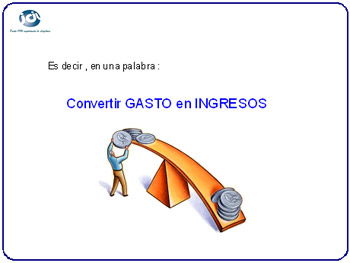
What is the reverse logistics?
The reverse logistics is the group of logistical activities of collected, desmontaje, desmembramiento of products already used or his components as well as material of distinct type and nature with the object of maximizar the aprovechamiento of his value, in wide sense of his sustainable use and in last case his destruction.
Keywords:
- Collected
- Maximisation of the value
- sustainable Use
Cycle of life of a product. Paradigm of the reverse logistics
Detain us here a moment and analyse in detail the diagram that appears in the following figure concerning the cycle of life of a product:
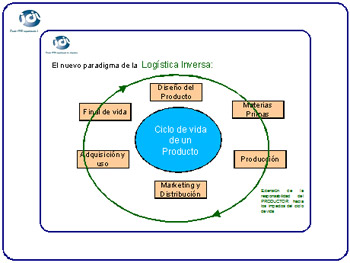
Appears 2
Here is where appears the new paradigm that is not another that: “The one who produces the article is who is responsible in the impacts of the cycle of life”. This has changed it all, and has changed it of form so deep that has done that each one of the links of the cycle of life of the product have very in account the impact that in environingingmental terms infringe, and that by extension is the producing company the last manager.
In a simplification no exenta of sense last, could say that:
“The one who contaminates pay”
See in detail the changes that this new paradigm has propiciado in each one of the fundamental links of the cycle of life of a product:
The design now has to go further of the above-mentioned, has to contemplate in his nature elements less contaminantes or directly no contaminantes, recyclable, reduction of the variation of materials, simplify the number of compositions and ease of desmontaje, as well as a design headed to the reuse of the product. The raw materials now have to focalizarse in reducing the impact in the environingingment, incorporate in his pertinent material base of the recycled of the same, his simplification and standardisation. The phase of production has to now do upsetting no only in the utility of the product in yes, but very especially in the packs and packaging that accompanies it. It is notorious the environingingmental impact of said containers and packagings overcoat the ones of difficult elimination and/or recycling.
Now the marketing and the distribution have to have very in account, first the positive impact that on the society has the one who a product was no contaminante or hit in minimum degree on the environingingment, second at the same time have to take into account the new standards of packagings as well as his optimisation. The phase of acquisition and use in which as before we mentioned is the phase where the product interactúa with the consumer, is affected by the increasing awareness of the respect by the environingingment in all his appearances facilitating his classification when it arrive the end of life. Arriving to the phase of final of life is remarkable to stand out the extraordinary change that all the society as well as the company in particular has had and has to realizar if we compare it with say 30 years backwards in Spain and in general in the western world. It is precisely in this phase where the reverse logistics has gone in of full to manage effectively said products arrived to said point of ending of his useful life like such.
Have appeared companies that operate like operators of reverse logistics so much for the urban solid waste (RSU) as for the industrial waste, recicladores, etc., that no only solve an ecological problem but also and very important contribute value and increase our Gross Inner Product (GDP) like country with his business activity.
The 6 ways of the reverse logistics
Walk # 1. Reuse and/or resale in outlet
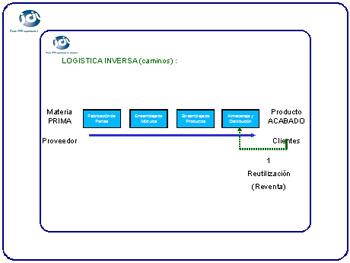
Reuse: consists in recovering the product in yes to give him a new use, since the same keeps his form and possesses an invalid or scarce deterioration. In this case the product is subjected to operations of cleaning and maintenance with which the same is taken advantage of in his whole although they exist minimum differences with the similar but new products.
In this way # 1 in where they concentrate the increasingly numbers systems of resale in outlet that take advantage of “waters down” products that by any circumstance did not sell in the time and commercial format foreseen and that continue adding value like reusable products in logistical sense.
Is interesting to add that this system outlet allows to increase the sales when giving orderly exit and structured commercially to said products to the time that increases the intrinsic profitability of the company in so much reduces the stocks, is destined space to his storage as well as increasing the profitability of the points of sales. Examples very known of this format have them in the textile sector, publisher, etc.
Walk # 2. Repair
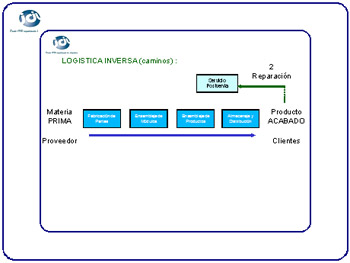
Repair: in this case the option is to plant again in operation the product used. These operations are carried out in the domicile of the customer or in the technical services of repairs. It is cream generally of the need to substitute some piece or component that have reached his useful life. An example of this type of products are the small appliances, washing machinees, dryers, etc.
Walk # 3. catering
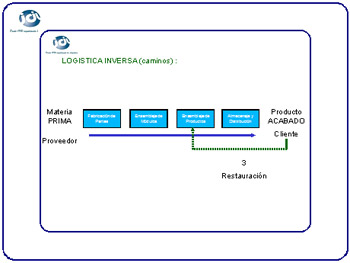
catering: it treats to give back the value to the product used by means of the utilisation of new technologies that allow to expand his useful life. This type of alternative can observe it in the case of the civil and military aviation, for example.
Walk # 4. Refabricación And canibalización
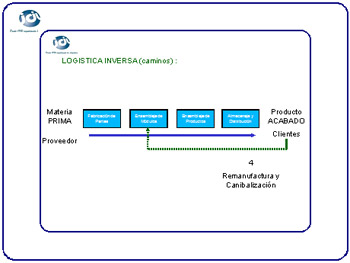
Remanufactura: The products subjected to this type of recovery have a degree of half decomposition-high and offer to the company an important profit since it achieves a cost of manufacture in a lot of near cases to 50% of a new product. In other words the company employs his components in the re manufactura of an original product. Of this are example the industry automotriz, the electronics equipment dealers equipment dealers, the one of mobile telephony, etc.
Canibalización: It calls them to those operations of management of the products out of use (Final of Life) where only recovers a minimum part of the components that later will be able to be used in a process of manufacture. These parts will be allocated to the operations of repair, catering and re-manufacture. We find classical examples in the electronic components.
Walk # 5. Recycling
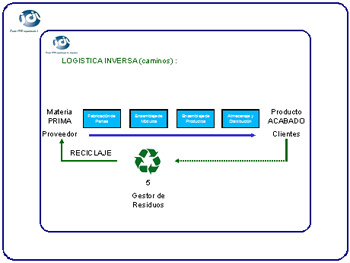
Recycling: in this case looks for a recovery of the material that is a residue of another product to be used later like prime matter in the manufacturing of one following that can reach levels of quality of an original product because of the use of new technologies increasingly advanced. It is a treatment that allows no only the aprovechamiento of waste with which reduces the volume of rubbish, diminishes the utilisation of other raw materials attaining a saving of power and of natural resources. Besides it contributes directly of effective form to the increase of the GDP (Gross Inner Product) and by extension of the employment. A study presented by the Association of Recicladores of European plastic determines that they could create 50.000 places of work in all the European Union if of the current two third parts of the plastic waste generated in the breast of the Union, did not export directly out of the borders of the Union and treated properly by logistics operators Europeans. (plastic magazine and rubber number 658 page 6).
Walk # 6. Incineration and dump

Poured controlled: is the alternative final for recovery and puts an end to the cycle of life of a product. It employs in the case that the product can not be conditioned or used of any another form. It realizar in big terrains where excavates and fills up alternating layers of rubbish and of earth that are compacted. At all times it treats to choose a geological zone and topográficamente suitable to avoid the pollution in the surface or the groundwaters. Due to the fact that the anaerobic decomposition of the organic wastes generates gases, the sanitary ware filling has to have good ventilation to avoid explosions. Also it fits to stand out the aprovechamiento typical of the waste (biomass) like gas fuel.
Incineration: it is a process of combustion controlled to high temperatures, that transforms the organic fraction of the waste in inert materials (ashes) and gases. Along the process obtains big quantity of heat that can take advantage of for heating in cities or to generate electrical power. It is not a system of total elimination, since it generates ashes, slags and gases, but determines an important reduction of weight (70%) and volume (80-90%) of the original rubbishes.

